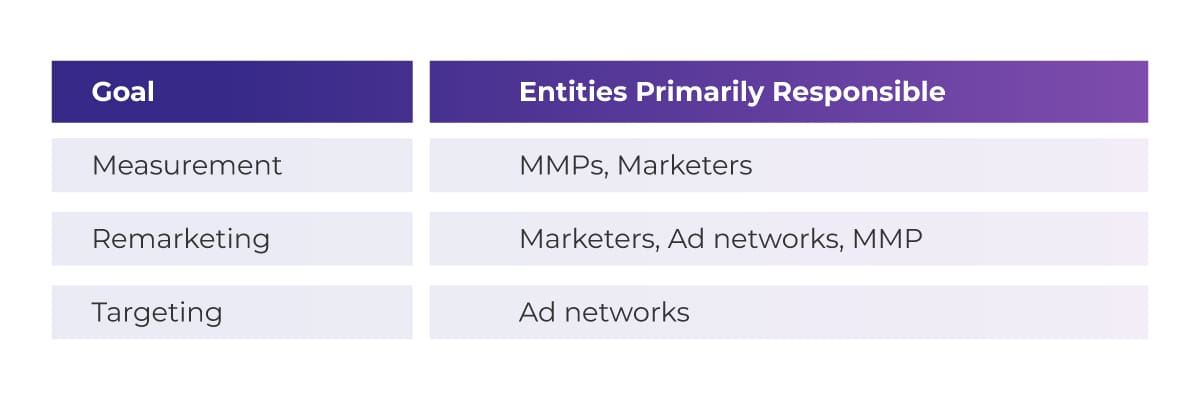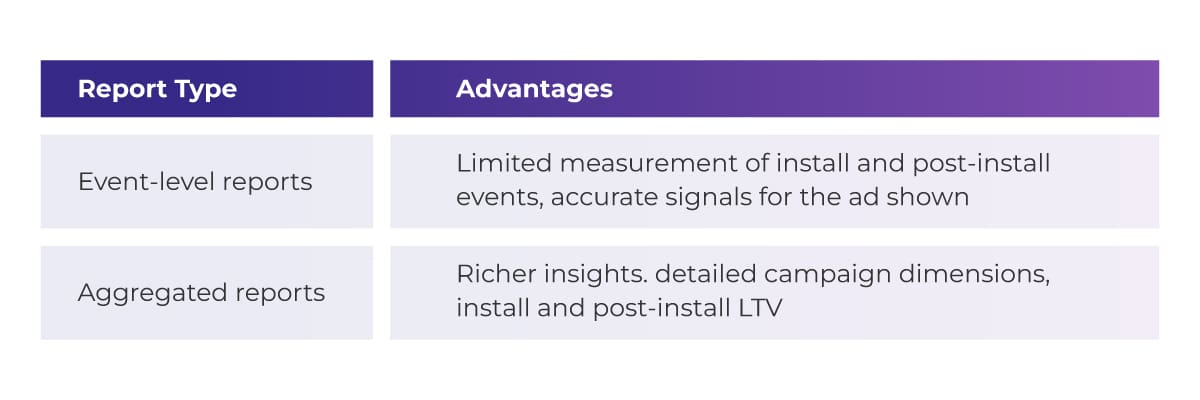In February 2022, Google made a pivotal announcement: a commitment to bolster user privacy on Android, echoing Apple’s App Tracking Transparency (ATT) initiative. Central to this transformation is the planned deprecation of Google Advertising ID (GAID) in 2024. A development that has marketers globally bracing for a seismic shift in user privacy protocols.
Table of Contents
What is GAID’s current role?
GAID currently underpins three primary functions: attribution, audience management, and third-party data sharing. It is predominantly utilized by marketers, ad networks, and Mobile Measurement Partners (MMPs). The impending deprecation of GAID will profoundly impact marketers, particularly in the realms of measurement and remarketing.
- Attribution: GAID allows marketers to measure the effectiveness of their campaigns by tracking which ad clicks or impressions led to app installs or other conversions. This helps them understand the user journey and optimize their marketing strategies.
- Audience management: GAID enables marketers to personalize their remarketing campaigns by identifying specific users and tailoring ads based on their behaviors.
- Third-party data sharing: GAID enables ad networks to construct persona charts, assisting them in delivering the most pertinent advertisements tailored to each user persona.

Impacts on Measurement
While the deprecation of GAID might seem like a major blow to marketing measurement, it’s important to note that it doesn’t signify the end of measurement capabilities. Google Play Install Referrer, a key attribution method on Android, remains unaffected. This tool allows marketers to understand where their app installs are coming from, which, for many, is crucial when optimizing marketing efforts. The Privacy Sandbox introduces the Attribution API, offering innovative methods for campaign measurement. This API provides two types of reports: event-level reports and aggregated reports. Event-level reports offer limited measurement of install and post-install events, providing accurate signals for the ad shown. Aggregated reports, on the other hand, offer richer insights, including detailed campaign dimensions and lifetime value (LTV) data.

However, the new system presents challenges in data deduplication due to the aggregated nature of the Attribution API. This makes it difficult for marketers to merge this data with analytics received from Google Play Install Referrer. MMPs, like Adjust or Appsflyer, offer solutions by deduplicating attribution data and enhancing data with insights, thereby providing a single source of truth mechanism.
Impacts on Targeting
The deprecation of GAID will also significantly impact ad targeting, which currently relies heavily on third-party data. This data allows ad networks to build detailed user profiles and deliver highly targeted ads. However, in the post-GAID era, this kind of user-level targeting will be significantly curtailed. In response to this, Google has proposed solutions for contextual ad delivery in the post-GAID era. One such solution is Topics, an on-device solution that allows for cross-app marketing while protecting user privacy. Another is the use of signals from the Attribution API, which provide limited user-level data for ad targeting. These changes will require ad networks to adapt their targeting strategies, focusing more on the context in which their ads are delivered rather than on detailed user profiles. This shift towards a more privacy-centric approach to ad targeting will be a major adjustment for marketers and ad networks alike.
Impact on Campaign Optimization and Development
The changes brought about by the Android Privacy Sandbox will have significant implications for marketers when it comes to optimizing existing campaigns and developing new ones.
What influence will it have on optimizing our existing campaigns?
As we mentioned earlier in this article, and as our Performance Marketing director Pablo Perez González said, “as long as the Google Play Install Referrer still exists with the same purposes it has today, we don’t need to panic too much. This method is contributing to a decent percentage of attributions and if we add on top of it the users who opt in for tracking once Sandbox is released, Google still will share good quality information to the ad networks, so I expect the situation and ad networks’ optimizations to be more promising compared to when ATT from Apple was released.” Moreover, the introduction of the Attribution API’s event-level and aggregated reports will provide new avenues for campaign optimization. However, these reports come with their own limitations, such as delayed reporting and the lack of advertiser-side user-level data. Marketers will need to adapt their optimization strategies to these constraints.
What influence will it have on building new campaigns?
In the post-GAID era, the development of new campaigns will also need to shift towards a more privacy-centric approach. The use of third-party data for targeting will be significantly impacted, requiring marketers to find new ways to reach their target audiences. Solutions like ‘Topics’ and the signals from the Attribution API can help in this regard, but they will require marketers to think more about the context in which their ads are delivered, rather than relying on detailed user profiles. Furthermore, the introduction of ‘Protected Audience API’ (formerly known as FLEDGE), Google’s privacy-centric audience management and advertising solution, will change how marketers define their audiences for new campaigns. Marketers will need to work closely with their ad networks and MMPs to ensure they can effectively use Protected Audience API to create and manage their audiences. While these changes may present challenges, they also offer opportunities for marketers. To innovate and find new ways to reach their audiences in a more privacy-centric world.
In summary
While change is daunting, the shifts Android is introducing are propelling the ecosystem in the right direction. Away from user-level data dependency and toward privacy-forward approaches. Marketers should stay encouraged to prepare for these changes by reducing their reliance on user-level data and embracing aggregated insights. To stay abreast of these evolving changes, sign up for our newsletter. The future of marketing in the era of enhanced user privacy may be different. But with adequate preparation and adaptation, it can be equally effective.



